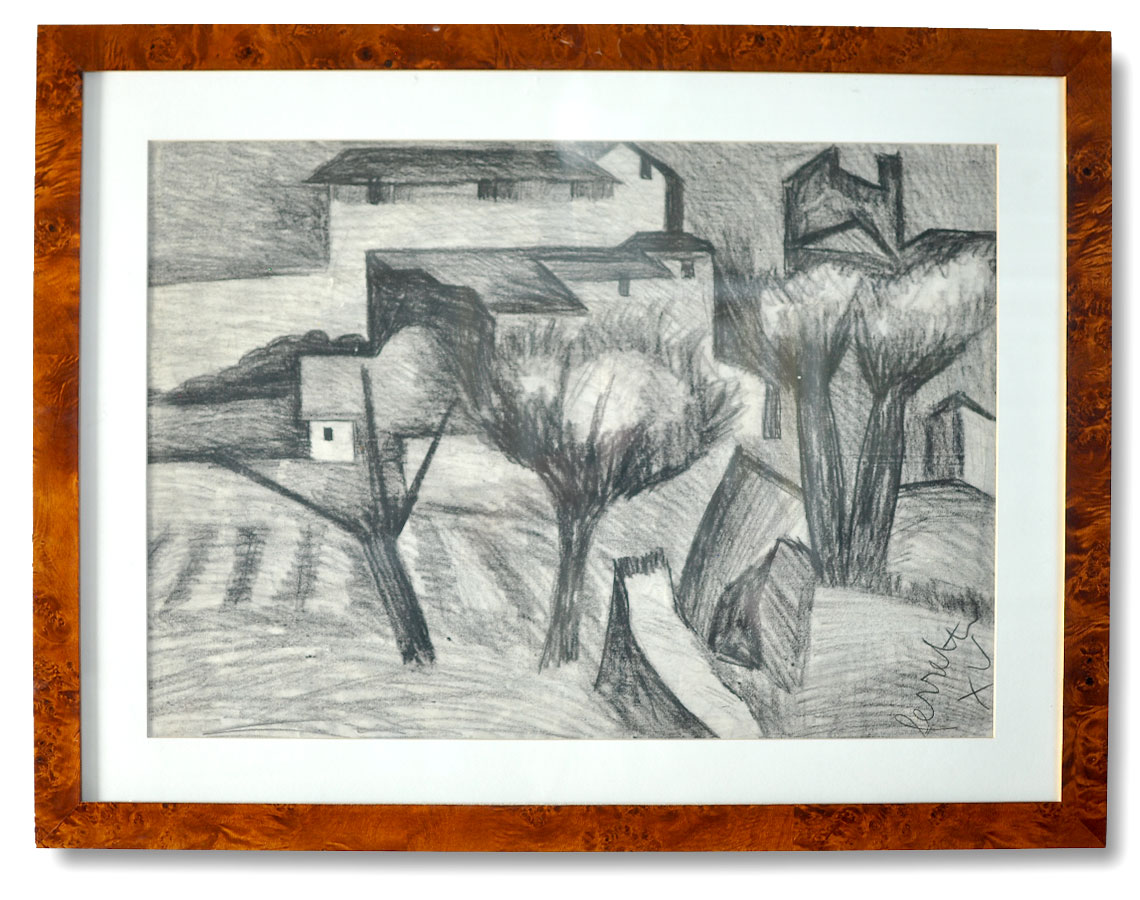Mario Ferretti (1915-1974), born in this era of shifting cultural and historical landscapes in Italy, found himself navigating a complex and often repressive society regarding his homosexuality. Although he chose to hide his sexual orientation throughout his life, he used his art as a medium to express his true self and his experiences.
Early Life and Career
Mario Ferretti was born during a time when Italy was transitioning through significant historical periods, from the Fascist regime to the post-war reconstruction. Growing up in a conservative society heavily influenced by the Catholic Church, he would have been acutely aware of the stigma attached to homosexuality.
Artistic Training
Ferretti pursued formal training in art, likely attending prestigious art academies where he developed his skills. His early works might have reflected the traditional themes and styles expected by society.
Artistic Expression and Hidden Meanings
Symbolism and Metaphor: Ferretti’s works were imbued with symbolism and metaphor to navigate the repressive environment. He used allegorical figures, mythical creatures, and abstract forms to express themes of love, desire, and identity subtly.
Themes: Recurring themes in his art might have included duality, secrecy, and inner conflict. These themes allowed him to explore his feelings and experiences without overtly revealing his homosexuality.
Influences: Ferretti could have drawn inspiration from other artists who used their work to comment on their personal struggles and societal issues, such as the symbolists and surrealists.
Career Highlights
Exhibitions and Recognition: Ferretti’s work gained recognition in art circles despite societal constraints. He participated in numerous exhibitions, where his unique style and profound themes attracted attention.
Critical Acclaim: Art critics might have praised his technical skill and the emotional depth of his work, often interpreting the hidden meanings without fully grasping the personal context behind them.
Later Life and Legacy
Ferretti continued to keep his sexual orientation private, even as social attitudes began to shift in the 1970s and 1980s. He might have found some solace in the burgeoning gay rights movement, yet remained cautious due to his established public persona.
Posthumous Recognition
After his death, scholars and art historians could have revisited his works, uncovering the layers of meaning related to his hidden identity. This re-evaluation would have positioned Ferretti as an important figure in both the LGBTQ+ and art communities.
Mario Ferretti’s life and career as an artist in Italy from 1915 to 1990 were profoundly shaped by the cultural and historical contexts of his time. By hiding his homosexuality but expressing it through his art, he left a legacy of deeply personal and symbolically rich works that continue to resonate with and inspire audiences today. His story reflects the broader struggle for acceptance and how art can serve as a powerful medium for personal and political expression.
